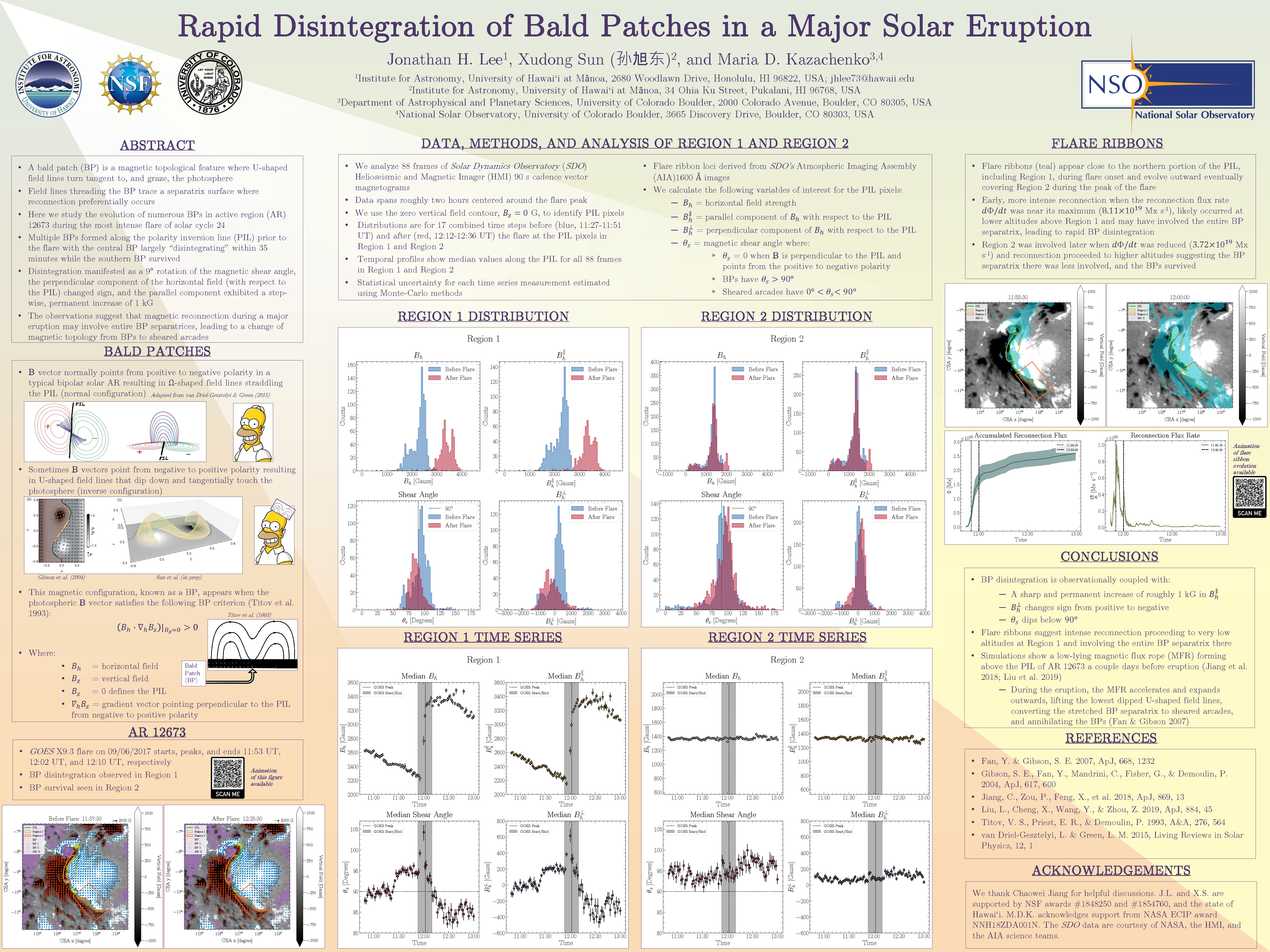Authors: Jonathan H. Lee (Institute for Astronomy, University of Hawai‘i at Mānoa, 2680 Woodlawn Drive, Honolulu, HI 96822, USA), Xudong Sun (Institute for Astronomy, University of Hawai‘i at Mānoa, 34 Ohia Ku Street, Pukalani, HI 96768, USA), Maria D. Kazachenko (Department of Astrophysical and Planetary Sciences, University of Colorado Boulder, 2000 Colorado Avenue, Boulder, CO 80305, USA)
A bald patch (BP) is a magnetic topological feature where U-shaped field lines turn tangent to the photosphere. Field lines threading the BP trace a separatrix surface where reconnection preferentially occurs. Here we study the evolution of multiple, strong-field BPs in AR 12673 during the most intense, X9.3 flare of solar cycle 24. The central BP, located between the initial flare ribbons, largely “disintegrated” within 35 minutes. The more remote, southern BP survived. The disintegration manifested as a 9° rotation of the median shear angle; the perpendicular component of the horizontal field (with respect to the polarity inversion line) changed sign. The parallel component exhibited a step-wise, permanent increase of 1 kG, consistent with previous observations of the flare-related “magnetic imprint.” The observations suggest that magnetic reconnection during a major eruption may involve entire BP separatrices, leading to a change of magnetic topology from BPs to sheared arcades.


